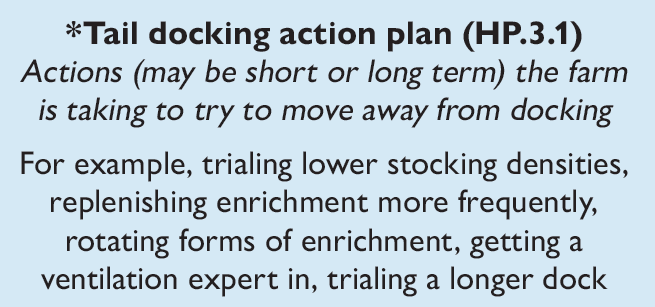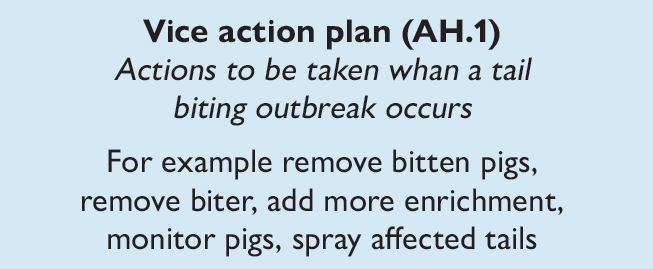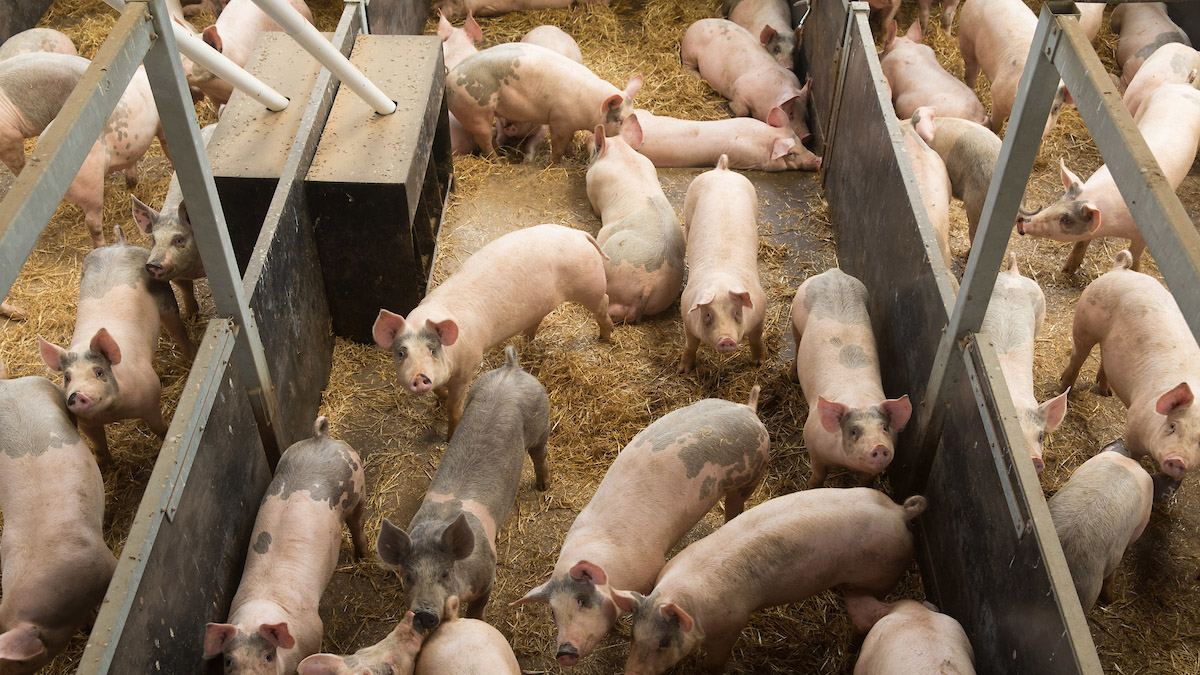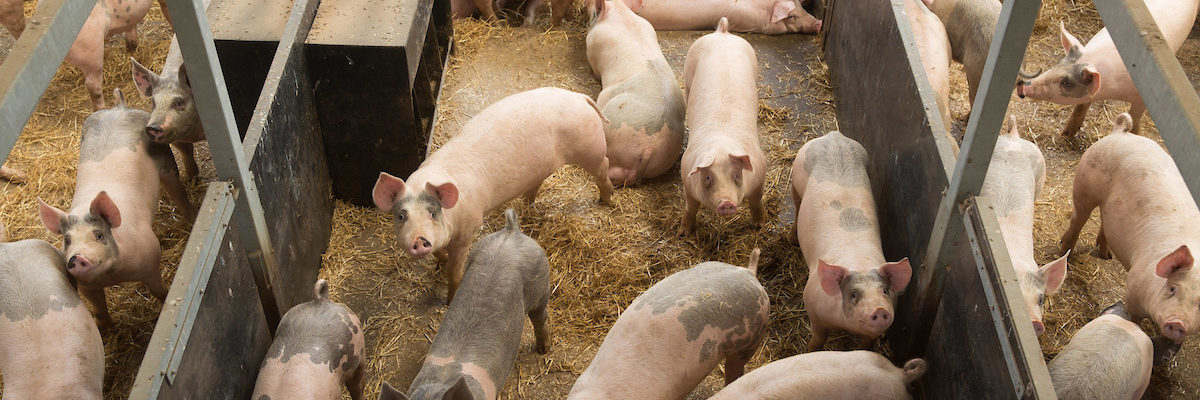Measures to minimise risk of tail biting
There are many reasons why tail biting can occur in any group of pigs. It can spread quickly in pig pens once it has started and can lead to painful tail injuries, infection, spinal abscesses, and lameness. However, there are known and identifiable risk factors associated with outbreaks and our standards seek to ensure members understand why the problem is occurring, minimise the risks and take action to avoid the need for tail docking.
All audit points in the new key standard (HP.3.1) will be assessed. The main requirements are:
- Farm-specific risk assessment for tail biting risk factors – ALL farms, including outdoor units, must do this, even if you have no history of tail biting and even if you receive pigs already docked or rear pigs with full tails.
- An action plan* outlining measures taken to minimise the risk of tail biting and the need for docking. This is required for farms that are rearing docked pigs (regardless of whether you dock the pigs yourselves or receive them docked). During the audit assessors will be looking to verify whether the actions are implemented in line with the timelines detailed in the plan.
It is important to note that this action plan is different from what is required in the vice action plan within the Veterinary Health Plan.


The AHDB WebHAT tool can be used to generate both a risk assessment and an action plan for HP.3.1. Red Tractor also has a tail docking action plan template on the assurance website here.
With several months of data now available almost all the regular non-conformances members are receiving are related to either a new or revised standard. As such, reviewing the changes and becoming more familiar with them means that you can make effective changes on your farm and minimise the risk of not meeting the standards.

